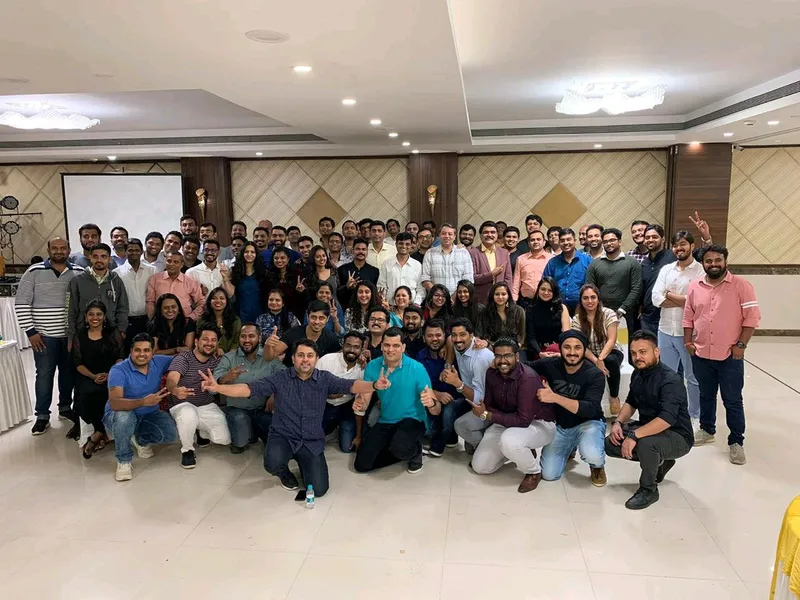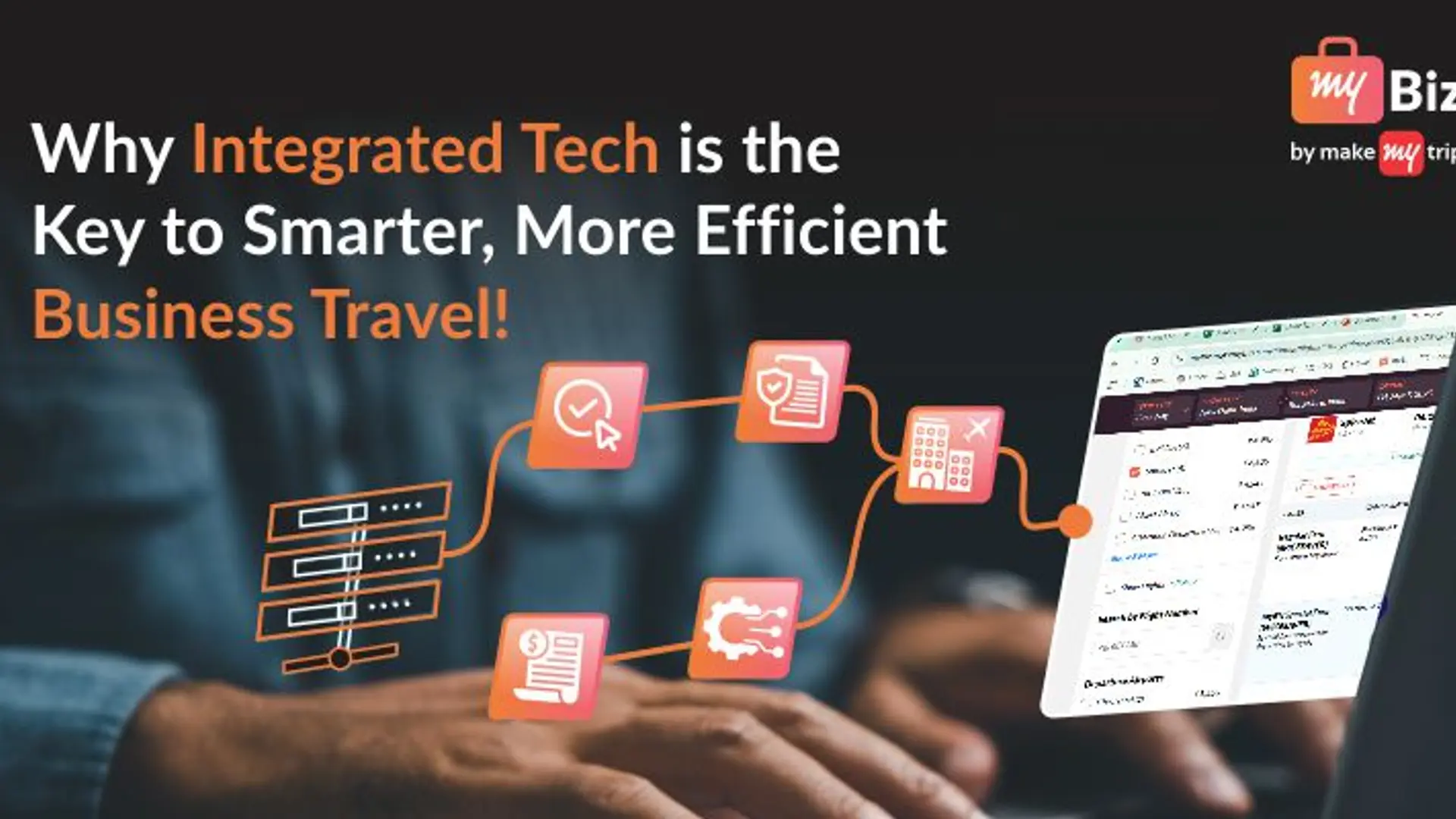[Product Roadmap] Starting with SMS, how Netcore today manages close to 50 pc of Asia’s email traffic
In this week’s Product Roadmap, we feature Netcore, which uses AI/ML algorithms to change the way product and marketing teams engage with consumers.
In 1997, Rajesh Jain founded Netcore with the intent to revolutionise the way marketing and product teams engage with consumers.
The team realised that with increasing digitisation, the role of CMOs and growth managers has become key to every organisation’s success. Despite the increasing complexity of the role, the tools do not give CMOs and growth managers a fully unified view of their customer’s intentions, preferences, and journeys.
“At Netcore Cloud, we enable new-age CMOs and growth leads with a range of products that help in acquisition, engagement, and retention. We help them create a unified view of the entire customer journey across all touchpoints, granting the much-needed insights to CMOs and growth managers to take important decisions,” Kalpit Jain, Group CEO at Netcore Cloud, tells YourStory.

Rajesh Jain, Founder, Netcore
He adds that Netcore Cloud is one of the largest homegrown marketing tech companies in Asia. Its mission is to help brands establish quicker and stronger relationships with their customers across all digital platforms.
“To do this, we work at the forefront of modern-day technology — be it AI/ML, hyper-personalisation, or data analytics — across our multiple product suites for marketers and growth managers. We are also building the next generation of ‘Customer Experience (CX)' product suite and Product Experience (PX) which is most relevant for today’s digital-first world,” he adds.
“When we started in 1997, our core mission was to help brands communicate effectively with their customers. Back then, Communications Platform as a Service (CPaaS) did not exist and there were no platforms that helped enterprises achieve scale and effectiveness in terms of communication,” says Kalpit.
The team states eight out of 10 unicorns use Netcore’s Cloud products. The company says they have over 5,000 customers in North America, South East Asia, and India. Close to 75 percent of India’s email traffic and 50 percent of Asia's email traffic goes through Netcore Cloud.

The Netcore Team
Starting with SMS and email
Kalpit adds that with the introduction of SMS and email marketing platforms, brands were successful in expanding their reach and refining their communication, thereby drastically increasing engagement and elevating the consumer experience.
To leverage SMSes, which were the most popular medium of communication back then, the team created a Pub/Sub platform called MyToday in 2008.
A free opt-in SMS subscription service, MyToday Dailies had a cumulative reach of 10 million people every day. The platform saw over 3.5 million subscribers spread across the country. Using MyToday, consumers could subscribe to dailies across themes like News, Sensex, Cricket, or even the Bhagavad Gita.
“There would be a publisher who would send them updates regarding the theme they have opted for. This eventually pivoted into an Enterprise SME platform,” says Kalpit.
By 2011, the team realised the need to create a single unified platform that would enable marketers to pivot from a ‘Batch and Blast’ communications approach to a more intelligent way of communication with automation.
Working on the omnichannel model
“We designed an omnichannel communication platform that allowed marketers to design journeys involving all three channels – email, SMS, and voice, on one platform, seamlessly. For instance, our clients could flash numbers on TVC for consumers to give a missed call which would lead to them receiving an SMS having a link. As a result, the enterprise would now be connected to consumers who were genuinely interested. With our marketing automation-led products like Drop Lead Recycling Workflow, we started to build user journeys on data segmentation and analytics,” explains Kalpit.
He adds that for a communication service that facilitates SMSes or emails, the intelligence of that communication resides elsewhere. Armed with insights and expertise cultivated over the years, the Netcore team wanted to be at the core of decision-making by providing more intelligent offerings.
By 2015, they were already communicating to customers on behalf of several brands and therefore, were aware of the massive impact data segmentation had on consumer experience. The team wanted to bring value for the brands by enabling them to develop a greater understanding of consumer behaviour and automating consumer-campaign execution.
Data to the rescue
“Using our expertise and data-rich insights, we bring in the philosophy of data-driven marketing and personalised communication to benefit brands by leading them up the value chain and providing them with sophisticated tools. We ventured into Marketing Automation, which is more comprehensive and complex as it involves customer engagement and experience, predictive intelligence, analytics, retention, and personalisation,” explains Kalpit.
However, Marketing Automation was not a known concept in India. So, the first step for the team was education, and created a product called ‘Drop Lead Recycling Workflow’ for HDFC Life.
HDFC Life was struggling to manage technical shortcomings like a drop at the call centre. Using Marketing Automation, the team managed to create an SMS campaign for all the dropped leads without the use of any agent intervention.
“On our first attempt, we were successful in bringing about 13 percent dropped leads back to them, which was a phenomenal success. Following this, we approached several BFSIs and enabled them to mitigate through various marketing challenges,” says Kalpit.
Building upon AI
Before 2015, Kalpit adds that Batch and Blast was common and so was having one vanilla campaign for all consumers. Today, the product is hyper-personalised. Also, many product and growth managers rely on behavioural and product analytics.
Data is used towards developing a better understanding of how customers interact with apps and websites, and then this information is used to improvise on product experience.
When the team integrated with the client’s website and apps, Kalpit says the scale drastically increased by millions of user events. This is when they realised the need to build upon the technology
“Data segmentation is being upgraded by AI-led personalisation which is also evolving into individualisation or one-to-one marketing. Our recent acquisitions of Boxx.ai and Hansel.io were towards establishing personalisation to a unique user level,” adds Kalpit.
Netcore is moving from data-driven marketing to more intelligent marketing powered by AI and ML, where algorithms decide the right message, at the right time to the right user and using the right channel.
“We call this the 4Rs at Netcore Cloud. Manual undertakings by marketers today are being replaced by algorithms built into our AI product “Raman”, which segments consumers autonomously and scientifically,” says Kalpit.
The team internally built technology on top of open-source software and made acquisitions with the evolving needs of customers. Netcore made three back-to-back acquisitions over the last two years —Quinto.ai (conversational AI platform), Boxx.ai (AI-first omnichannel personalisation and recommendation engine), and Hansel.io
They have also invested in Easyrewardz, an omnichannel consumer lifestyle management platform.
Here are some of the learnings the team picked up in the building process:
- Timing is critical. To be at the forefront, you need to be mindful of the amount of time you are consuming to address a challenge.
- The market dynamics and the client needs are constantly evolving. Staying agile is key to staying relevant.
- There is no one size fits all for databases or programming. Also, do not blindly adopt what worked for someone else. Your use case may be unique and so has to be your solution.
- Keep a contingency, preempt and stay ahead. Foreseeing events in advance allows you to plan better and stay prepared.
- A minimum viable product (MVP) doesn’t mean that architecture can be done away with. Instead, it needs to be structured by a strong Minimum Viable Architecture (MVA).
- No matter who you are, getting involved in data architecture is key to building a scalable business.
Shivaani Jain, Co-founder of ‘Once Upon a Trunk’, an e-commerce D2C brand says, “The personalised implementation of Netcore Cloud provides the perfect algorithm to help reach the right audience with their desired preference which, in turn, has contributed to a higher conversion rate. As customers find more attractive products, the bounce rate has decreased significantly. This has helped us improve the quality session duration on the website and we are also able to showcase new and potential styles better. Customers are now purchasing more and this has led to an increase in Average Order Value. Within just 90 days, Netcore Cloud began contributing to 28 percent of the total revenue generated.”

Image credit and Data: Netcore Cloud
Rewrite and renew
From Netcore Solutions to Netcore Cloud, the team has written and rewritten the software several times over. For instance, many high-level programming languages like Perl and PHP were rewritten in Java and Golang for speed and concurrency.
The team also started working with industry experts and consultants from across the globe. They also replaced traditional statistical models and ML models with Deeper AI models built on Tensorflow for better accuracy.
Today, a large number of brands, the rise of social media, and the creator’s economy – all have led to the fragmentation of consumer attention.
“At Netcore Cloud, we have created a gamification model called ‘Mircrons’ to reward consumers for their attention. We are looking to expand this in the days to come. Our future plans involve empowering all the touchpoints between brands and their customers throughout the lifecycle of the customer journey,” says Kalpit.
He adds they would like to rethink the entire customer engagement and experience lifecycle with an AI-first approach.
“From a business perspective, we are looking to double our current ARR base to $150 million by 2024. We are targeting 30-40 percent of revenue from international markets, especially from the US and Europe through organic and inorganic growth. We aspire to become India’s first B2B SaaS IPO by the year 2022,” adds Kalpit.
Edited by Kanishk Singh


![[Product Roadmap] Starting with SMS, how Netcore today manages close to 50 pc of Asia’s email traffic](https://images.yourstory.com/cs/2/a9efa9c02dd911e9adc52d913c55075e/PRM-1630391045610.png?mode=crop&crop=faces&ar=2%3A1&format=auto&w=1920&q=75)
![[Product Roadmap] Using tech, how Khatabook made incremental shifts in its product to touch 10 million users](https://images.yourstory.com/cs/2/a9efa9c02dd911e9adc52d913c55075e/Khatabookteam-01-1629810240935.png?fm=png&auto=format&h=100&w=100&crop=entropy&fit=crop)
![[Product Roadmap] How XpressBees makes over one million orders every day through its logistics platform](https://images.yourstory.com/cs/2/a9efa9c02dd911e9adc52d913c55075e/Xpress-34-1629218033690.png?fm=png&auto=format&h=100&w=100&crop=entropy&fit=crop)
![[Product Roadmap] How Indifi Technologies used tech to disburse over 35,000 SME loans](https://images.yourstory.com/cs/2/721b1c100eb911eb936a1114ea00a5c0/IMG0129-1628607262798.jpeg?fm=png&auto=format&h=100&w=100&crop=entropy&fit=crop)
![[Product Roadmap] How Amazon, Mastercard-backed ToneTag uses audio technology to ensure payments even with a feature phone](https://images.yourstory.com/cs/2/604090802d6d11e9aa979329348d4c3e/Image1gpv-1619114101910.jpg?fm=png&auto=format&h=100&w=100&crop=entropy&fit=crop)
![[Product Roadmap] How gaming startup Playerzpot evolved from an app that crashed during IPL 2018 to touch 5M users](https://images.yourstory.com/cs/2/a9efa9c02dd911e9adc52d913c55075e/PRM-1627385832212.png?fm=png&auto=format&h=100&w=100&crop=entropy&fit=crop)




